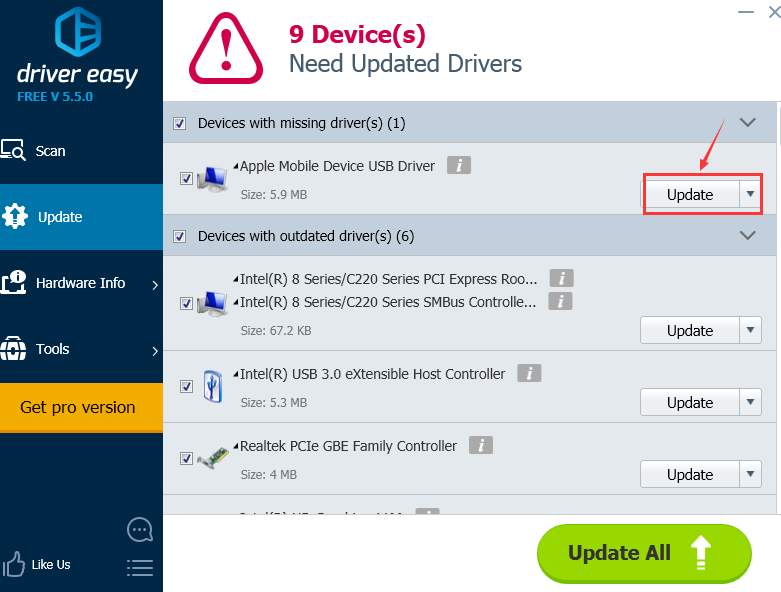If you are bugging over by the following problems:
1) a yellow exclamation mark in the Device Manager;
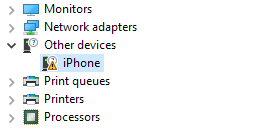
2) you see your mobile devices listed under category Unspecified in Device and Printers;
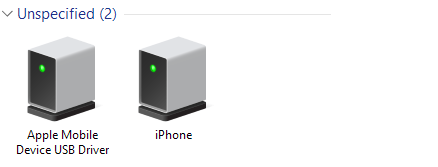
3) when you troubleshoot the Apple Mobile Device USB Driver, you see the following notification:
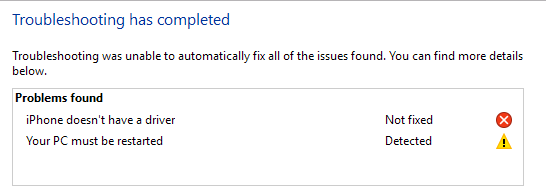
this post is what you need. All these problems boil down to one thing, that your iPhone is not connecting to your PC. Read on and follow the say-doing instructions to get your problem fixed.
Before we begin, we need you to make sure that you have done the following things:
- You have the button Trust this computer on your iPhone when connecting to your PC.
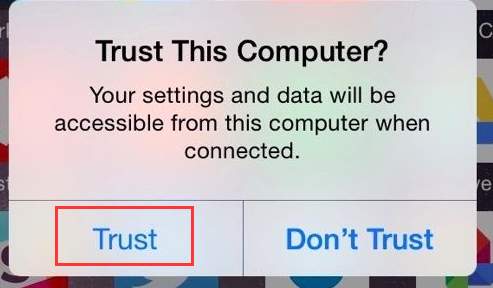
- Make sure that you have installed all Windows updates. This is to make sure that your computer device drivers are up to date.

- Make sure the USB cable is problem free.
- Make sure your device is turned on.
- Make sure you have the latest version of iTunes installed.
Now follow the steps below to get your problem solved right away!
1) Make sure that you have quit iTunes if it opens. Then connect your iPhone to the computer.
2) Go to Device Manager. Then expand category Universal Serial Bus controllers and locate Apple Mobile Device USB Driver.
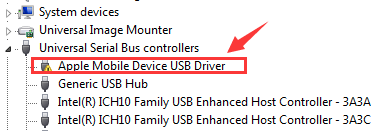
If Apple Mobile Device USB Driver option cannot be found under category Universal Serial Bus controllers, it might be under Other devices with the name iPhone.

Or under Portable Devices with the name Apple iPhone.
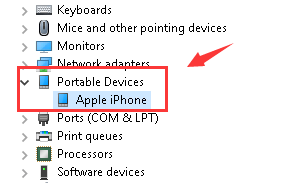
3) On the pop-out window, choose Browse my computer for driver software.
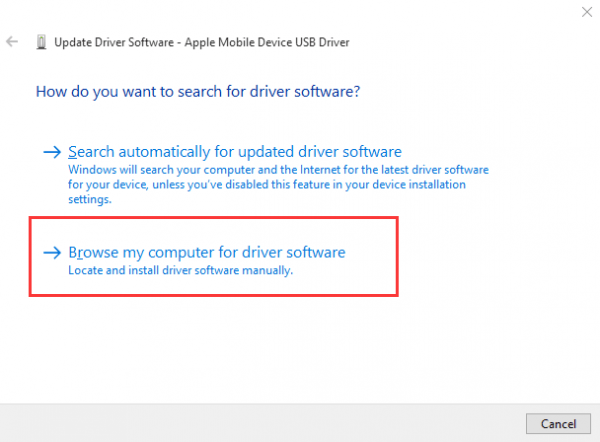
4) Then choose Let me pick from a list of device drivers on my computer.
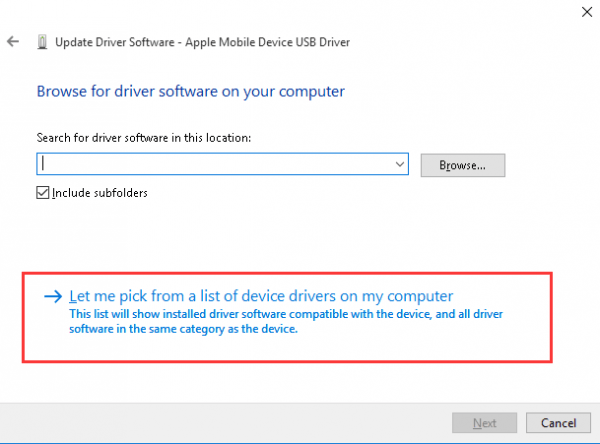
5) Click Have Disk… button.
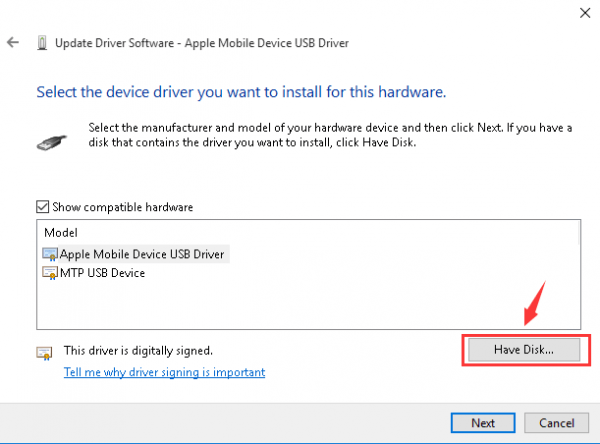
6) Click Browse.
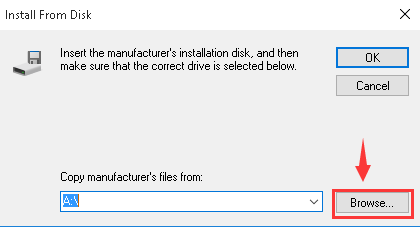
Then navigate to C:\Program Files\Common Files\Apple\Mobile Device Support\Drivers.
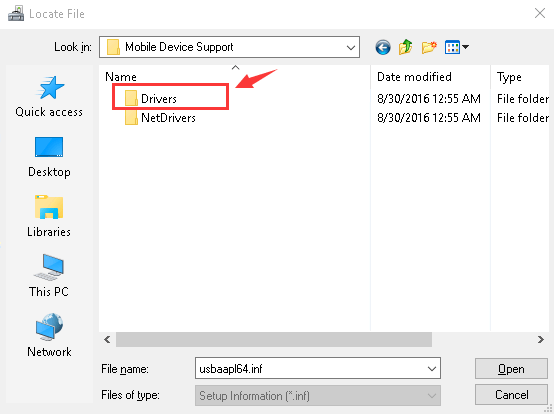
7) Double-click the usbaapl file. If you have a 64-bit version of Windows, this file will be called usbaapl64.
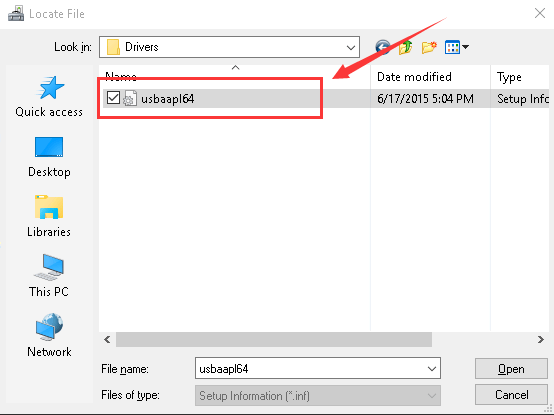
If you don’t see usbaapl64 here or if there isn’t a Drivers folder, look in C:\Program Files (x86)\Common Files\Apple\Mobile Device Support\Drivers.
8) Then you will be lead back to Install From Disk window. Click OK.
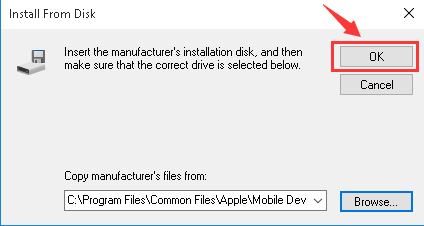
Then click Next.
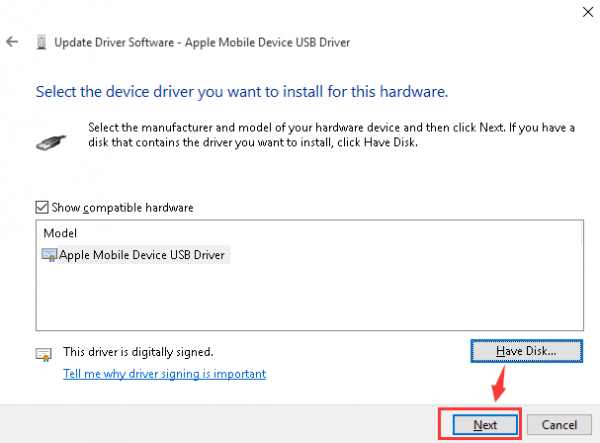
9) Windows will install the driver. If it prompted to say that the software that you are installing has not passed Windows Logo testing, click Continue.

Unplug your iPhone 7, then reconnect it using USB cable. Open your iTunes and see if your iPhone 7 can be detected or recognized by iTunes.
Your problem is probably being caused by driver issues. The steps above may resolve it, but if they don’t, or you’re not confident playing around with drivers manually, you can do it automatically with Driver Easy.
If you don’t have the time, patience or computer skills to update your drivers manually, you can do it automatically with Driver Easy.
Driver Easy will automatically recognize your system and find the correct drivers for it. You don’t need to know exactly what system your computer is running, you don’t need to risk downloading and installing the wrong driver, and you don’t need to worry about making a mistake when installing.
You can update your drivers automatically with either the FREE or the Pro version of Driver Easy. But with the Pro version it takes just 2 clicks (and you get full support and a 30-day money back guarantee):
1) Download and install Driver Easy.
2) Run Driver Easy and click Scan Now button. Driver Easy will then scan your computer and detect any problem drivers.
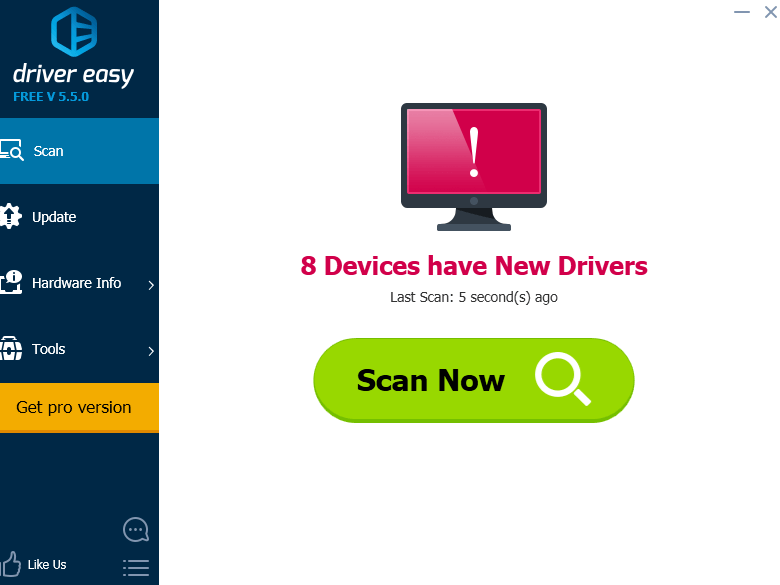
3) Click the Update button next to a flagged Apple driver to automatically download and install the correct version of this driver (you can do this with the FREE version).
Or click Update All to automatically download and install the correct version of all the drivers that are missing or out of date on your system (this requires the Pro version – you’ll be prompted to upgrade when you click Update All).
